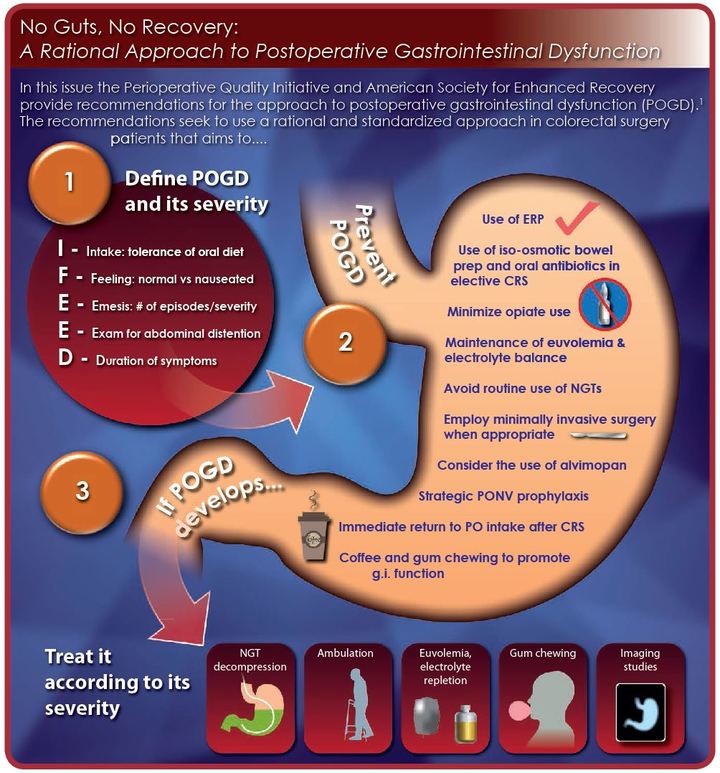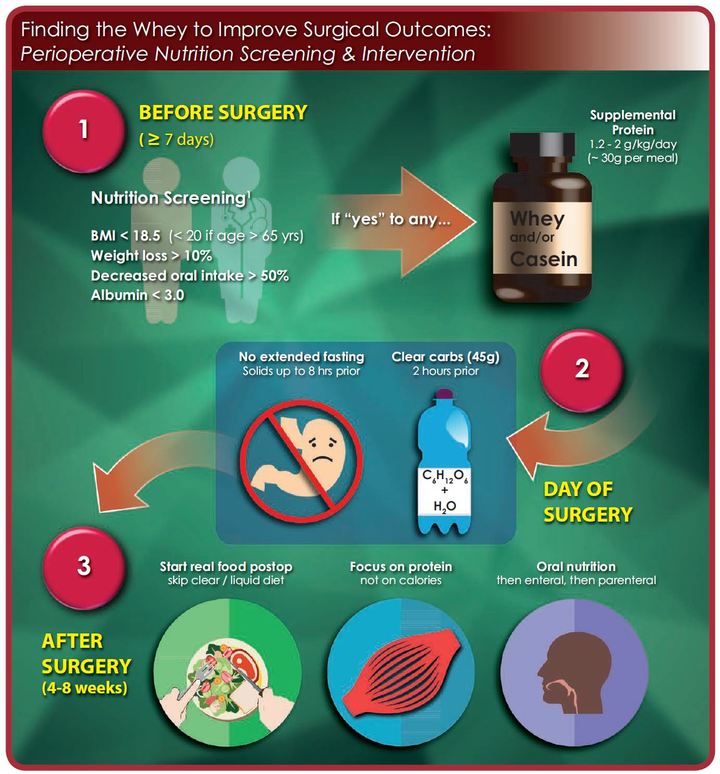POQI-2 Gastrointestinal Infographics
Anesthesia & Analgesia
International Anesthesia Research Society
Nutrition Infographics
POGD Infographics

Recognizing that the return to normal gastrointestinal function and motility is a primary focus ofrnrecovery after major colorectal surgery, a group of international experts convened to (1) more clearlyrndefine postoperative gastrointestinal dysfunction and stratify its severity, (2) review the literature tornassess effective preventive strategies, and (3) make consensus recommendations in the management ofrnpostoperative gastrointestinal dysfunction. The infographic depicted summarizes these aims. The readerrnis encouraged to review the article cited for more extensive analysis and discussion.rnCRS indicates colorectal surgery; NGTs, nasogastric tubes; PONV, postoperative nausea andrnvomiting.

While the majority of patients presenting for gastrointestinal surgery are malnourished and data have shown an associated increased risk for postoperative morbidity and mortality, only a small portion of patients receive any preoperative nutrition intervention, as few hospitals have a formal nutrition screening process. This is in spite of surgeons belief in adequate nutrition for outcome improvement and demonstrated cost savings for nutritional interventions. In this infographic, we review a novel perioperative nutrition screening tool and strategy for improving perioperative nutritional status, which optimally begins weeks before the planned surgery and extends months beyond hospital discharge until the patient has achieved full recovery. BMI indicates body mass index.